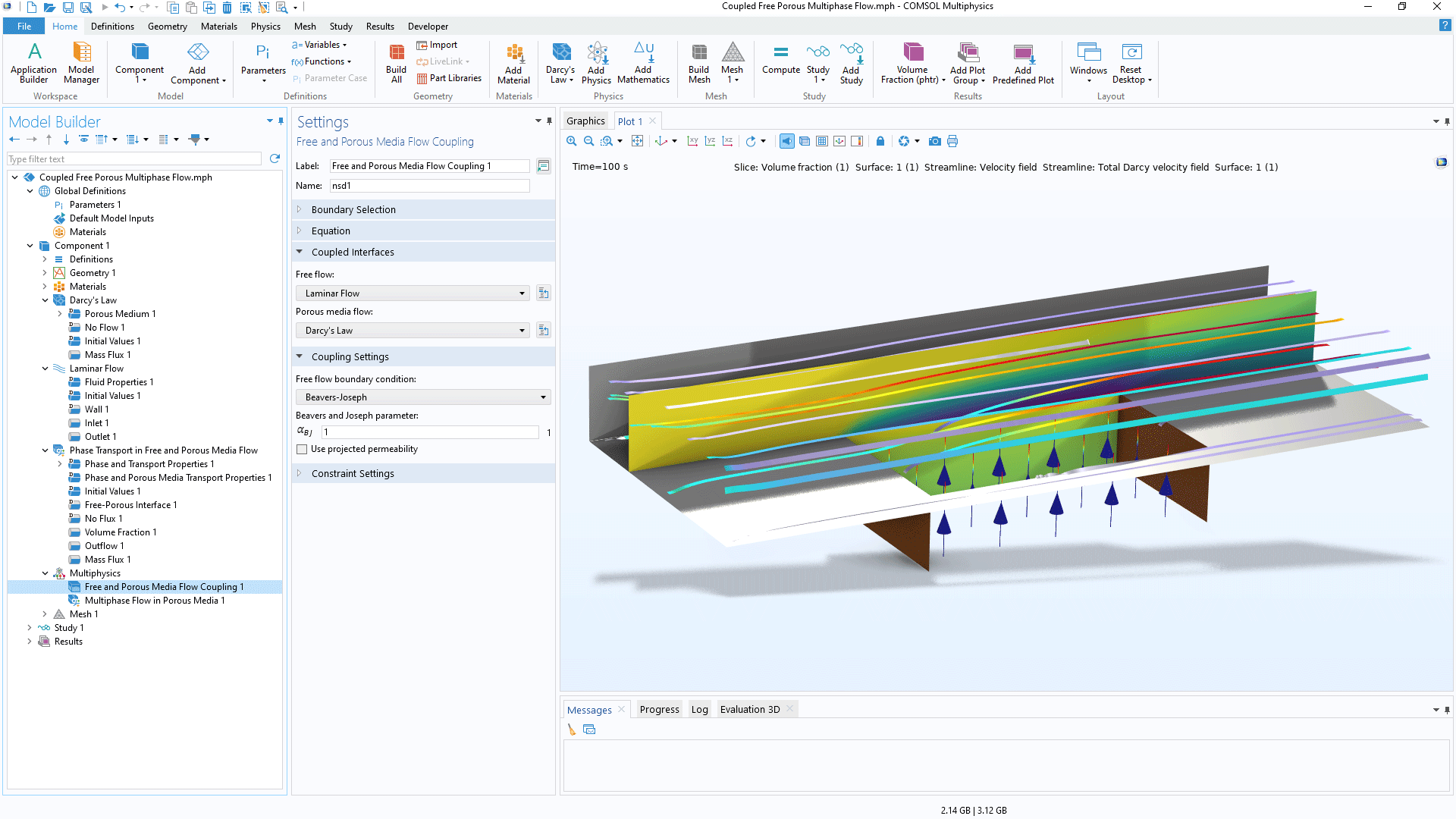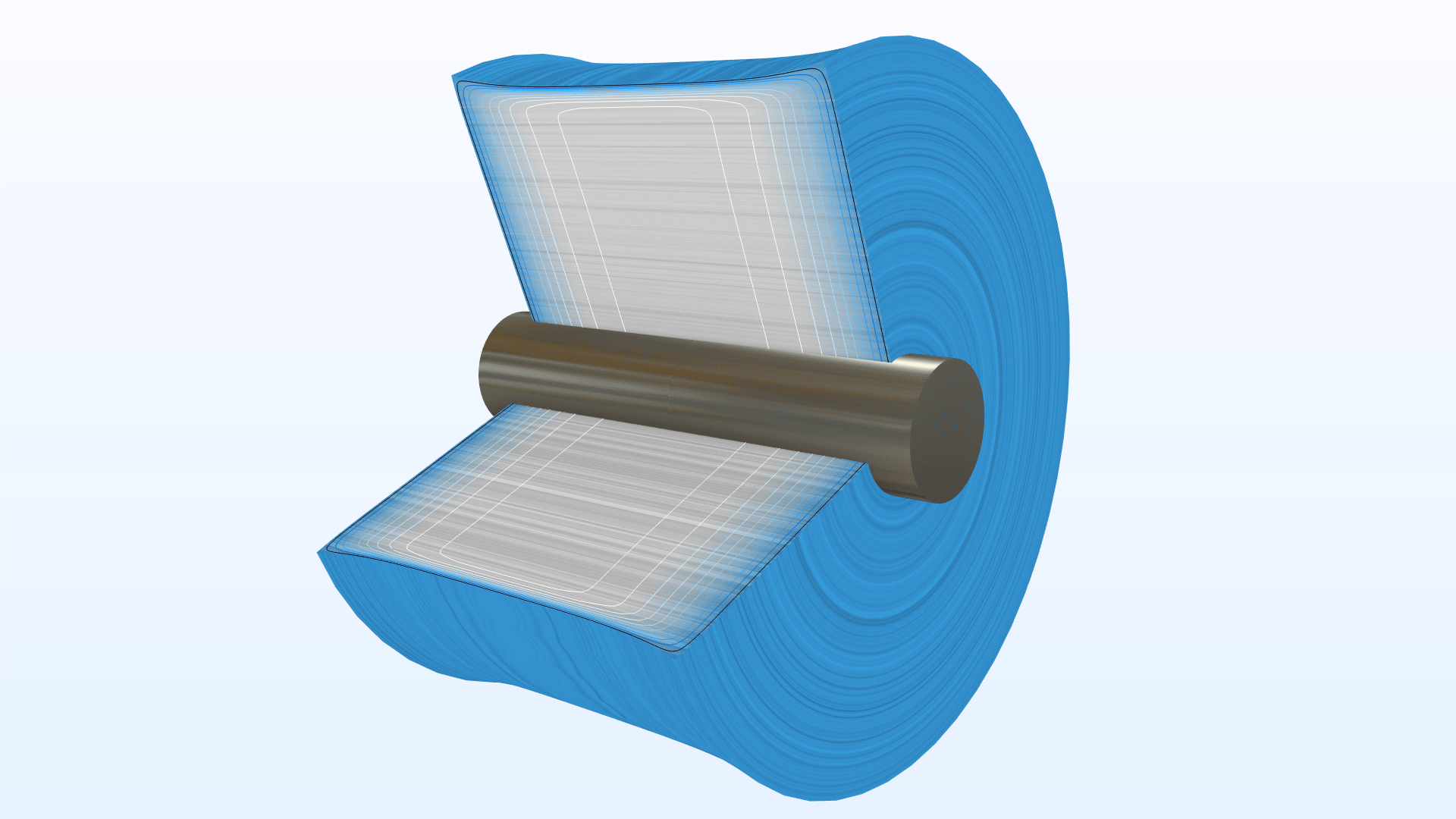support@comsol.com
Porous Media Flow Module Updates
For users of the Porous Media Flow Module, COMSOL Multiphysics® version 6.2 introduces two new interfaces, Moisture Transport in Solids and Phase Transport in Free and Porous Media Flow, as well as new multiphysics couplings between porous media flow and free flow. Learn more about these updates and more below.
Moisture Transport in Solids
In porous solids, moisture is present as either vapor or liquid water, and moisture transport can occur through convection or diffusion. The new Moisture Transport in Solids interface can be used to model vapor and liquid transport in deformable bodies with, for example, large rotations, swelling, or shrinking. You can see this interface in use in the new Moisture Transport in a Paperboard Roll tutorial model.
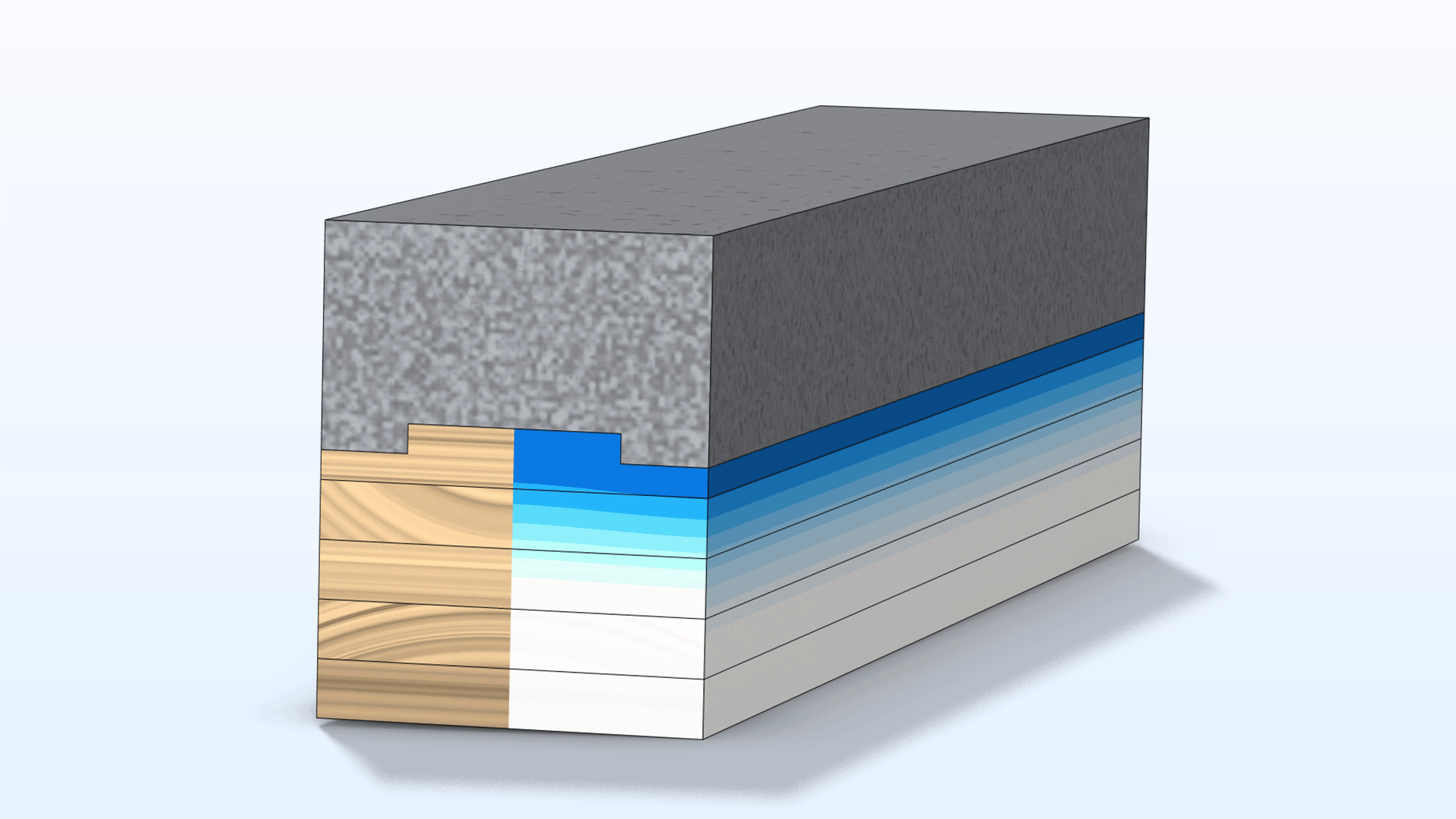
New Unsaturated Poroelasticity Multiphysics Interface
There is a new Unsaturated Poroelasticity multiphysics interface that, once selected, adds a Solid Mechanics interface, Moisture Transport in Solids interface, and Unsaturated Poroelasticity multiphysics coupling to the model tree. You can see this new multiphysics interface in use in the new Moisture Transport in a Paperboard Roll tutorial model. Note that this feature requires the Structural Mechanics Module.
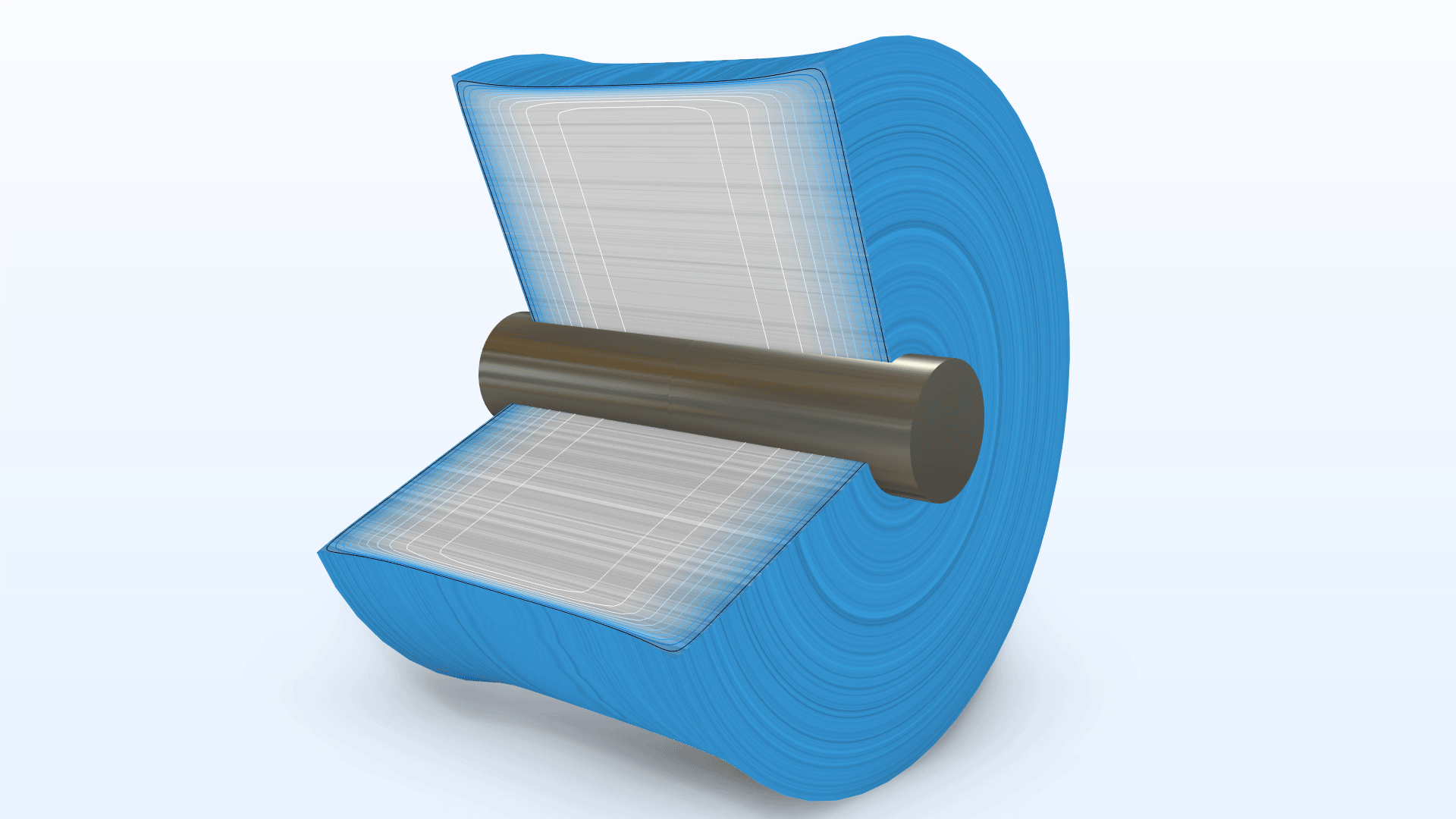
Biphasic Poroelasticity
A new Biphasic poroelasticity model option has been added to the Poroelasticity multiphysics coupling. This new option is suitable for modeling the coupling between fluid flow and large deformations in hydrogels and soft biological tissue.
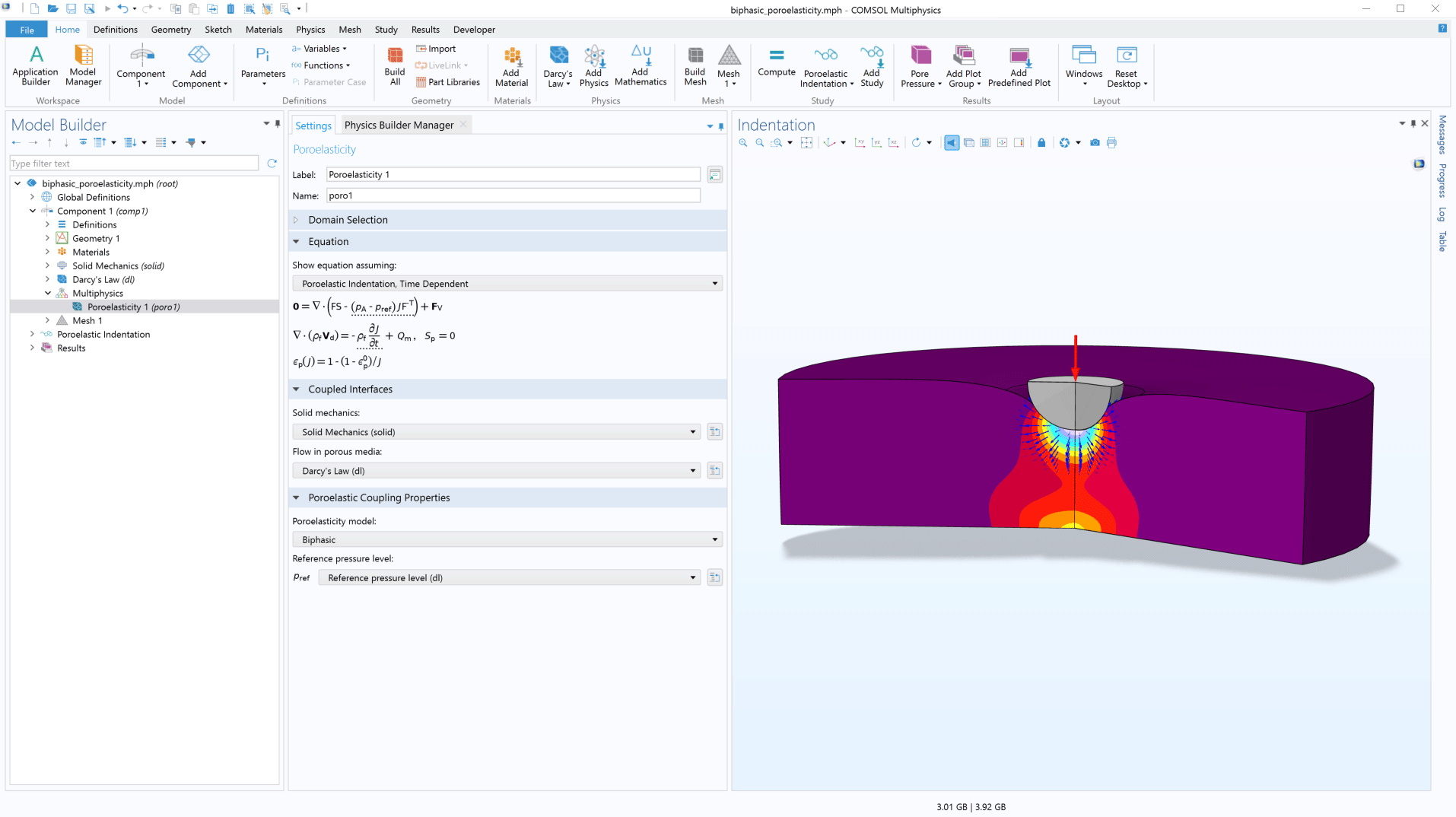
New Dual Permeability Features
There are two new Dual Permeability Medium and Unsaturated Dual Permeability Medium features within the Darcy's Law and Richards' Equation interfaces. These features enable modeling of saturated or unsaturated fluid flow within a dual permeability approach, where two distinct and interconnected porous systems are present. The dual permeability approach can be applied to cases where both porous systems are fully saturated and have varying permeabilities. You can view these new features in the new Furrow Irrigation — Dual Permeability tutorial model.

New Dual Porosity Feature
A new Dual Porosity Medium feature has been added to the Darcy's Law and Richards' Equation interfaces. It can be used to model saturated fluid flow that occurs in interconnected, contrasting porous systems, such as where one porous system possesses significantly larger pores (macropores) and the other possesses smaller pores (micropores). This new feature is used in the new Seawater Intrusion in a Coastal Aquifer tutorial model.

New Interfaces for Coupled Free and Porous Media Flow
There is a new Free and Porous Media Flow, Darcy multiphysics interface that, once selected, adds a Darcy's Law interface, a Laminar Flow interface, and a new Free and Porous Media Flow Coupling multiphysics coupling to the model tree. This multiphysics interface can be used with the new Phase Transport in Free and Porous Media Flow interface to seamlessly model multiphase transport in free and porous media flow.
New Density Options
In the Darcy's Law and Richards' Equation interfaces, two new Fluid type options are available in the Fluid subnode of the Porous Medium and Unsaturated Porous Medium features. The Incompressible and Compressible, linearized options have been added, and the previous Gas/Liquid default option has been renamed to Compressible in order to better describe the equation of state used for the fluid.
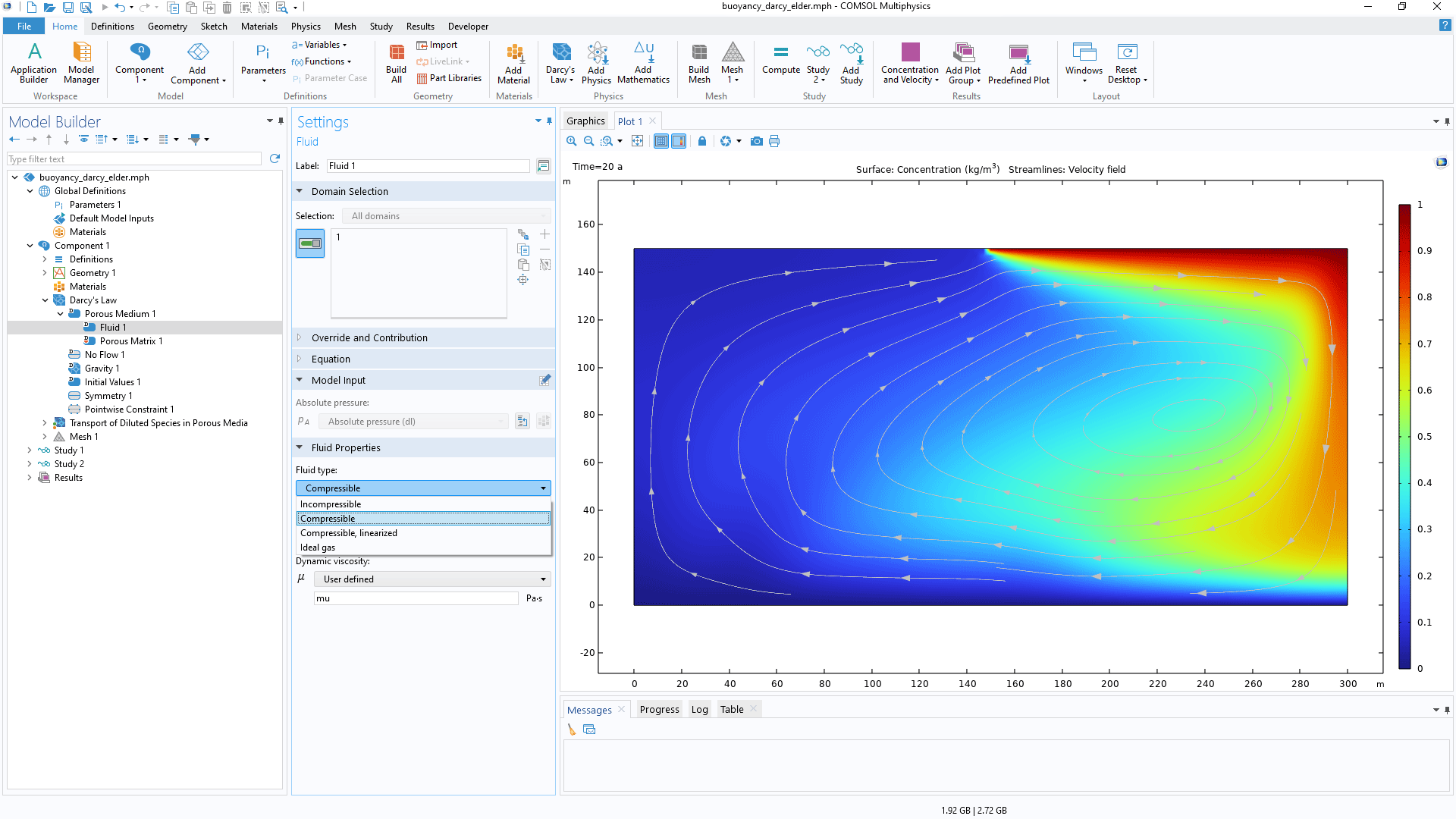
Additional Velocity Contributions
A new Contributing Velocity subnode is available for the Porous Medium, Unsaturated Porous Medium, and Dual Porosity Medium features within the Darcy's Law and Richards' Equation interfaces. This new feature allows for external velocity contributions to be added to the Darcy velocity, which can, for example, arise due to the solute concentration gradients in liquid flow or Knudsen diffusion in gas flow applications.
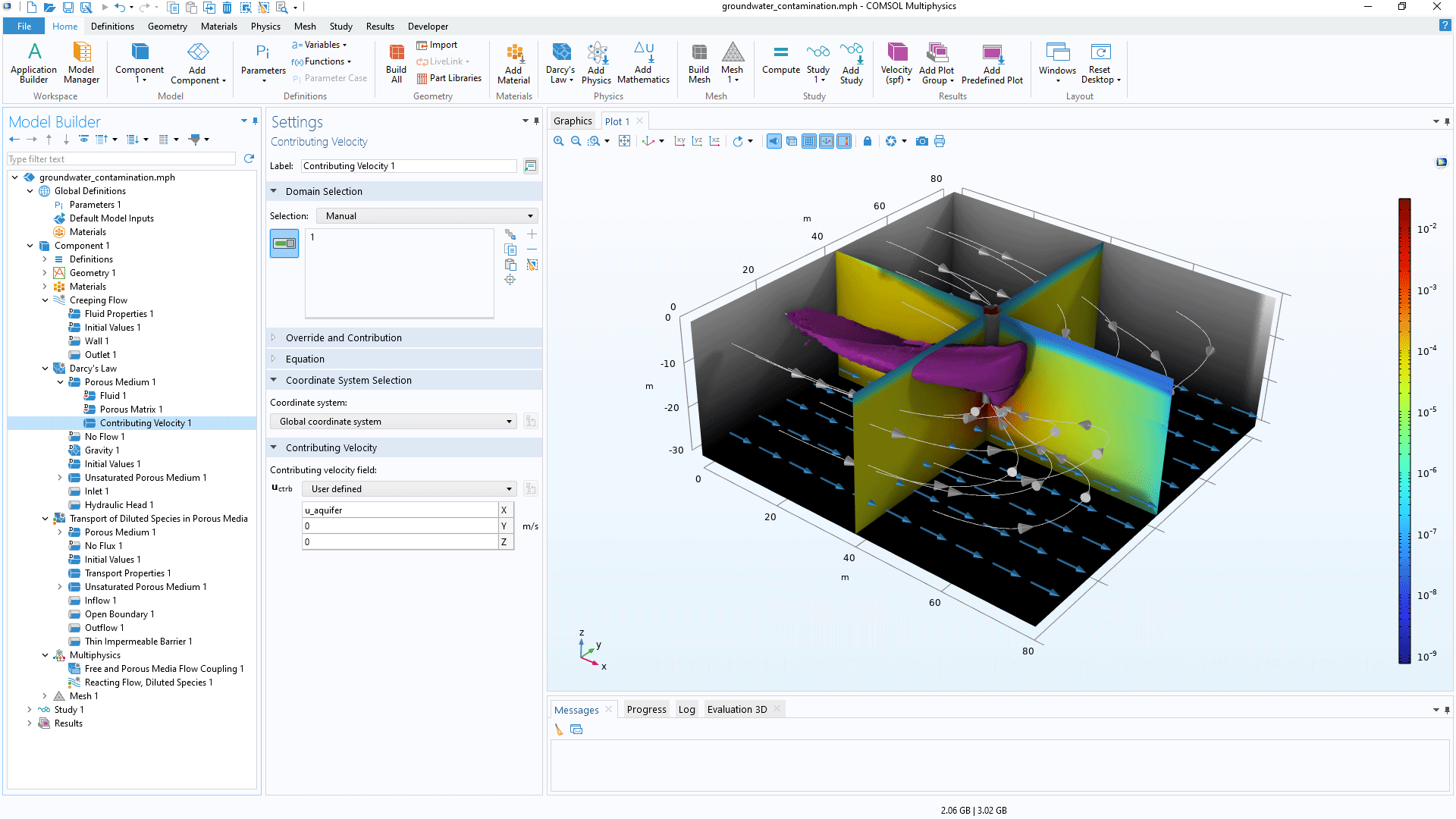
Heat and Moisture Transport in Anisotropic Porous Media
The material property features for the vapor permeability and moisture diffusivity of building materials now support anisotropic properties. It can be especially useful to model multiple layers with different material properties as a single homogenous domain, as shown in the new Anisotropic Hygroscopic Porous Medium tutorial model.
New Option for Weather Station Selection
In the Ambient Properties node, a new Around location option has been added for choosing a weather station based on GPS coordinates. Once the latitude and longitude of a specific location have been given, the feature displays the 100 nearest weather stations using the haversine formula. This simplifies the selection of the closest weather station when a location does not exactly correspond to an existing station.
Thin Moisture Barrier on Exterior Boundaries
The Thin Moisture Barrier feature in the Moisture Transport interfaces has been extended to be applicable to exterior boundaries. Typical applications for this feature include exterior vapor barriers or coatings.
New Tutorial Model
COMSOL Multiphysics® version 6.2 brings one new tutorial model to the Porous Media Flow Module.
Moisture Transport in a Paperboard Roll
Application Library Title:
paperboard_roll
Download from the Application Gallery

